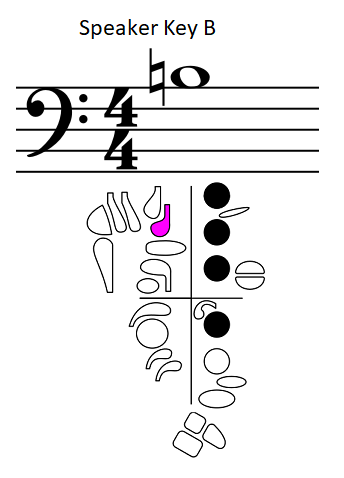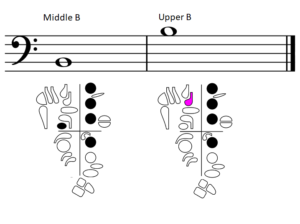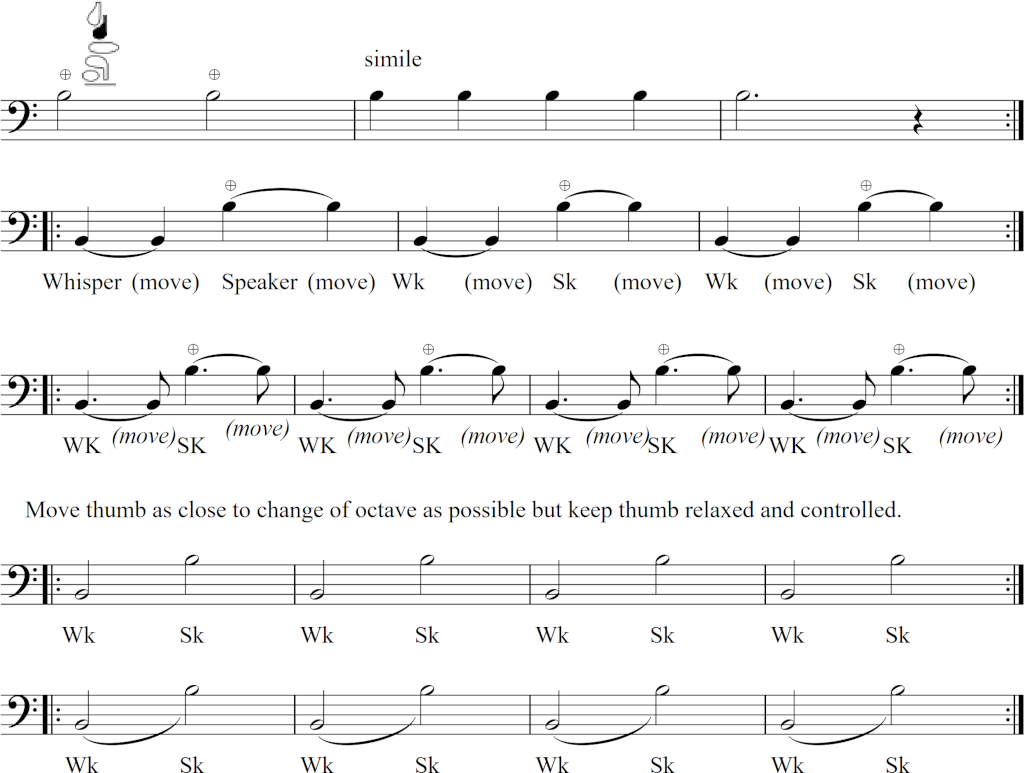
The upper B on most bassoons works best with the high C speaker key.
As with the other speaker key notes, the fingering is almost the same as the octave below. The left thumb is the only finger that changes between octaves, it is on the whisper key for middle B and the high C speaker key for upper B.

Matching Pitch
Play through Matching Pitch on B to determine which speaker key sounds best on your instrument.
- Use fast air in the upper octaves for good response and tone.
- Experiment with voicing to see where your tongue needs to be for good intonation.

Speaker Key Exercise on B
This exercise will give you practice playing octave Bs.
Remember:
- Time your thumb motion to be in position to press the appropriate key for the next note before it starts.
- Use faster air for the speaker key notes for good intonation and tone.
- Use slower air for the lower B to keep it in the lower octave.
- Change voicing between octaves as needed (“ee” if upper octave is flat and back to “ah” for lower octave.”
Speaker Key Exercise on B

Hot Cross Buns
Remember to use fast, cold air and your best breath support.
Half-hole G needs the resonance key (left pinky) to have good intonation and sound good.

B major Scale in half notes
B major might look scary with all of the sharps BUT you already know all of the fingerings. A-sharp feels like B-flat, G-sharp feels like A-flat, D-sharp feels like E-flat. Play the scale through at a slow, safe tempo to sort out the finger patterns.




Feedback/Errata